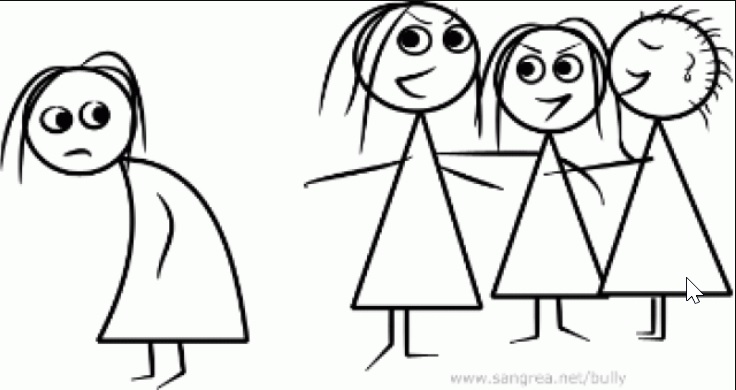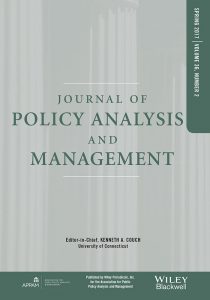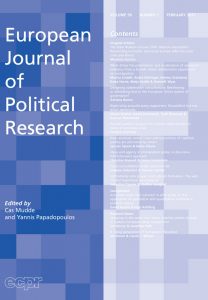School teachers’ perceptions of the bystanders’ role in school bullying
by Aikaterini Triantafyllou, Department of Education, Turku University, Finland · Published · Updated

This particular piece of research was conducted with teachers employed in Finnish primary/lower and upper secondary schools. Ten in number were asked to unfold their perceptions of what role the bystanders play in school bullying. This text draws from their expertise to address a problem with several facets as, for example, it fuels other school problems as absenteeism. Many children choose absenteeism to avoid school because they are bullied there. Considering the long-lasting effects of bullying on victims, it is a severe problem we cannot overlook. The perspective here is triadic. Triadic considerations of school bullying go beyond the bully-victim dyad and examine the factors that pave the way for the bullying act to happen in the first place. Bystanders are an integral part of the triadic bullying equation, they can stop bullying or keep it going. It has been documented, for example, that victims feel less anxiety and depression when they have been defended and less rejection by their peers. Even pupils who are at high risk of victimization because of certain characteristics they possess such as dressing or speaking in a deviant way, can be spared to a certain degree when peers in the classroom do not reinforce bullying.
Unfortunately many children in schools simply watch or look away even though practices have been applied in hope to turn these children to defenders. A hope that hasn’t been materialized. This research article indicates that defenders are scarce despite the long term implementation of anti-bullying programs. The teachers who participated in this research do not meet defenders in their schools. Looking closer at the majority of bystanders, a group commonly referred to as outsiders, it is noticeable that they have empathy, prosocial skills-know what the right thing to do is when bullying occurs- and manage to keep themselves away from trouble by not being victims themselves. These attributes make them resemble defenders. But unlike defenders, they do not help the victims. On the other hand, there are groups of students who do not resemble defenders as they do not help the victims either, they actively help the bullies instead. They are fewer in numbers than outsiders but co-bully with the key leader. Bullying happens in schools by bullies and those who cheer and assist them. The time has come to look at the potential of these latter groups of students. What if we could transform their thinking? Whereas outsiders seem not to take the next step and display courage, reinforcers and helpers are already doers. They are the ones who need to be guided carefully to proper action. By placing the key to the right lock, we might end up with doers of good.
Moreover, we need to keep in mind that students embrace roles but they do not always follow the same role. Whereas due to this variation assigning students to roles is difficult, hopefully this variation shows that there is room for intervention. A student who present themselves as outsiders at school but then inform their parents of bullying at home, or a student who does nothing in class but confronts the bully during the break, both indicate that there are hybrid defender roles and that undesirable roles can be abandoned and changed. Bullying prevention attempts need to build on these complex processes at hand and make sure that all students are respected for who they are in the present moment without stigma; a problematic behaviour can come out ameliorated in the future. There is hope if we promote behaviours which are well-adjusted, if we try to bring such behaviours to light also from students who would be surprised to see what they can experience, the reward to see a classmate not offended but defended. One teacher of this study was inclined to call considerate bystanders “upstanders”. The process of “upstanding” can be accomplished in small steps. For example, classmates who do not laugh during the bullying episode do not signal either that nothing is wrong in the scene. Victims and bystanders who show their actual distress can break a chain of events which perpetuates bullying.
As this article supports the triadic way of looking at school bullying, it puts emphasis on another important societal factor, namely the impact of parents. On the perceived role of the teacher: students expect their teachers to stop bullying to the point that if a teacher has not responded in the past, students stop reporting bullying episodes to them in a future episode. Students also do not intervene when teachers are present as they expect them to intervene. Indeed teachers undertake specific actions to steer their students to the right direction and be loving and caring role models. Among these actions, teachers respond promptly to harness bullying, they exhibit consistently which behaviours they require, for example, by being polite, friendly and accessible to their students so that students can inform them when they or their classmates are in trouble. Nevertheless, teachers feel that they cannot do as much thus, parents need to get more involved. For example, children from families where there is abuse and intolerance for others, are involved more in episodes of bullying in schools. Parents and teachers can lead the way together and co-create bullying-free realities in schools and neighbourhoods. Proper and coordinated handling from parents and teachers can alleviate also the society at large from this debilitating problem. Indeed the more the family and school units educate and prepare their younger members how to think and act in a bullying incident, the better the chances are that helpful behaviours will prevail. Society’s youngsters are down the road its peoplepower. So who would you rather be now and thereafter? The one who gives the cold shoulder (image 1) or the one who vows to generously protect (image 2)?

Triantafyllou, A. (2022). School teachers’ perceptions of the bystanders’ role in school bullying: A study in the Finnish context. Children & Society, 00, 1– 15. https://doi.org/10.1111/chso.12624
Aikaterini Triantafyllou holds a BA in Psychology and an MA in Education. She has worked several years as a teacher of English in Greece. She is interested in investigating anti-bullying rationales and exploring new angles to school bullying intervention.
hashtags: #schoolviolence, #bystanderpower, #teacheraccounts





